An inspiring 1962 dispatch from a 63 y.o. Antifascist rancher from Sturgis, SD
Ok, he didn't call himself "Antifa," but this fiery letter I found in Congresswoman Edith Green's archive is a reminder of the importance of the 100% American tradition of everyday antifascism
Between 1955 and 1974, Edith Green was the Portland area’s Democratic representative in Congress. Unfortunately for her, one of her constituents was Walter Huss. In 1961-2, Huss and a group of fellow ultra-conservatives organized a grassroots insurgency designed to push the Multnomah County Republican Party to the right and thereby thwart the communist mind virus (otherwise known as center-left liberalism) that had supposedly infected both parties. [I talked about this 1961-2 insurgency in this post.]
One premise of this 1961-2 far right insurgency—in which Huss worked together with John Birchers, former Silver Shirts, future Posse Comitatus members, and other assorted conspiracy theorists and white Christian supremacists—was that Democratic Congresswoman Edith Green was a dangerous agent of the Communist conspiracy who must be immediately replaced by a genuinely anti-Communist Republican.
It probably goes without saying, but here it goes anyway. Edith Green, former schoolteacher from Salem who would later go on to be instrumental in the formulation of Title IX and who has a federal building named after her in Portland, was NOT a Communist. In fact, by the late 1960s she’d become quite a conservative Democrat who spoke out against many federal programs she’d previously supported. She even endorsed Ford over Carter in 1976. But engaging with the world as it was rather than as he imagined it in his conspiracy-addled brain was not Walter Huss’s forte.
In 1961-2 Edith Green found herself the target of wild accusations being thrown at her from people and organizations she had never heard of before. She wrote letters to various organizations in Portland trying to figure out what the hell was going on. Eventually she pushed back against her far right tormenters in a variety of fairly gentle ways, one of which involved collecting information on the contemporary far right in Portland to put on the Congressional Record. She also got Oregon’s Republican Secretary of State, the Goldwaterite conservative Howell Appling, to investigate whether Walter Huss had broken the law by engaging in political activities under the supposedly “educational” auspices of fighting Communism.
Salem Capitol Journal, 12 December 1962
Huss eventually admitted to spending $8.52 to print up anti-Edith Green leaflets and the case was dropped. I think this investigation was intended to teach Huss a lesson about the legal consequences of engaging in political activity under the cover of his supposedly “anti-communist” educational organization, but LOL, this was Walter Huss so that lesson was definitely not learned. If anything, it just fed the persecution complex that fueled his angrily manic political activities. [In a pattern that would repeat multiple times over the years, Huss tried to get revenge against Green in 1964 by running in the GOP primary to be her opponent in the general election. And in another pattern that would repeat, Huss lost that primary election. The winning primary candidate, who then got shellacked by Green in the general, got 27K votes to Huss’s 21K.]
Salem Statesman Journal, 25 December 1962
Because Edith Green became such a target for and critic of the far right in 1961-2, she received a barrage of letters on the topic. The ones from supporters of Huss and the John Birch Society expressed whiny outrage at her unfair persecution of such noble truth-telling patriots. Those letters are all fairly predictable. But the most interesting letter I found in Green’s papers was from Sturgis, SD rancher Homer Ayres (1899-1992).
I share it with you here because it’s one of the more bracingly clear-eyed assessments of the political situation ca. 1962 that I’ve seen. In the 1930s Ayres had battled the pro-Hitler, fascist elements that had emerged in the far West, and he astutely picked up on the extent to which the Bircher mobilization reactivated many of the same illiberal, antisemitic, and authoritarian energies. These people weren’t “anti-Communists,” Ayres claimed, as much as they were anti-statist radicals using repackaged antisemitic conspiracy theories to do the bidding of plutocrats who sought to dismantle the elements of the federal government that benefitted ordinary people. Ayres was outraged that such fascist radicals got treated like reasonable political actors just because their skillful propaganda depicted them as “conservative” defenders of American tradition that was under siege by “collectivists.”
Ayres urged Democrats like Edith Green to go on the offensive, to not simply ignore or poke fun at the Birchers and wait for them to go away, but rather to aggressively make the case to the public as to why they posed an authoritarian and plutocratic threat to American democracy. “The program of the Birchers would take us back to feudalism or the Flintstones in a hurry…If members of Congress will expose them then the people can use their material and broadcast it over the countryside.” Ayres was alarmed by the Birchers’ success in winning over the hearts and minds of his neighbors with their attacks on the “liberal media” and their claims that any sort of government program was basically a trojan horse for Communism. Ayres encouraged Green to not let these authoritarian posers get away with it, to use her power and influence as a member of Congress to expose these people as the distinctly American fascists—simultaneously anti-statists AND authoritarians—that they were. Only that way could the American people accurately assess and hopefully reject the policies advanced by this far right element working to take over the Republican Party. [To fast forward to 2020, Trump won South Dakota, former home to Democratic Senators George McGovern and Tom Daschle, 62-36.]
Ayres was a local antifascist activist who walked the walk. He assiduously read the newspaper and kept research files on the creeping fascist threat. More than that, he put his research to use in informing his fellow citizens. The previous year a Methodist Senior Citizens club 20 miles NW of Sturgis had hosted a speaker in favor of the Birch-supported Liberty Amendment. This amendment would have eliminated the federal income tax and essentially defunded the majority of the federal government except for the military. Ayres showed up the following week to offer the opposing view, and when this group of South Dakota Methodist Senior Citizens took a vote on the matter they unanimously sided with Ayres. If supporters of democracy were going to beat back the fascist creep, the battle had to be engaged not just at the national level, but at the local level as well, one South Dakota senior citizens’ club at a time.
Queen City [SD] Mail, 16 February 1961
My research into Walter Huss’s world has introduced me to a lot of truly horrible, hateful people from our nation’s past. But one unexpected pleasure of doing this research has involved encountering many ordinary people like Homer Ayres who pushed back against the creeping fascism of the far right. [I wrote about another such clear-eyed person named Ezra Baker, a white Christian school janitor from Eugene who sent Governor Mark Hatfield a moving, anti-racist letter in 1964.]
Since the 1950s, America’s multi-racial and religiously pluralistic democracy has been under assault by a far right movement whose theory of change involved taking over the Republican Party to serve as an institutional vehicle for their illiberal and exclusionary vision of American society. That 70-year battle inside the GOP is still ongoing, with the forces of anti-democracy in ascendance with little sign that there’s a course correction in the party’s future. Moving forward, a key question is whether the advocates of democracy, regardless of partisan affiliation, can convince their less politically-engaged friends, family, neighbors, fellow church members, and co-workers to, at the very least, stop voting to empower the radical reactionary enemies of pluralistic democracy who have gained such a foothold in the Republican Party. We can demand that those in positions of power and influence commit to protecting democracy, but we can also do our bit to honor and carry forward the memory of Homer Ayres, a veteran of the battle against the American Hitlerites in the 1930s who thirty years later drove twenty miles on a cold February South Dakota night to go make the case against the Birchers to a group of Methodist Senior Citizens in Spearfish.
Like Homer, I still have faith that the hateful illiberalism and plutocratic populism that have come to define the modern GOP are not popular with the majority of my fellow citizens. But politics is about organization and coalition building, not just what happens to be popular or not. The anti-majoritarian structure of the American political system (exacerbated by the last 20 years of aggressive GOP gerrymandering in red/purple states like Wisconsin, Ohio, and North Carolina) makes it even more difficult to translate the pro-democratic sentiments of the American majority into a political force capable of countering the growing force of minoritarian anti-democracy. Add to that the fragmenting and echo-chamber-creating impact of social media and the torrent of money reactionary billionaires have poured into skillful propaganda outlets like Fox, Newsmax, the Daily Wire, PragerU, AM radio, etc….and you can see why advocates of American democracy have their work cut out for them.
Homer’s letter is a useful reminder that we’ve been in this struggle a long time, and that there’s work that all of us can be doing.
Homer Ayres and the ongoing history of Everyday Antifascism
A sign I saw on August 17, 2019 at the counter protest to the Proud Boys’ invasion of Portland.
In August 2019 I drove to Portland to be part of the counter-demonstration against the ~500 fascists from around the country who’d come to terrorize the city. Though I didn’t know anything about Homer Ayres at the time, I now find it symbolic that I parked my car that day only a block from the Oregon Historical Society archive where I found Homer’s letter last week.
You may recognize the names of two of the key organizers of that August 2019 event, Joe Biggs and Enrique Tarrio. Both are now serving lengthy sentences for their role in organizing the January 6 insurrection, a 2021 event that now feels like the logical (but in August 2019, unimaginable to me) outgrowth of what these two were up to in Portland only 16 months earlier.
Enrique Tarrio and Joe Biggs lead a band of a few hundred fascists across a bridge in Portland in August 2019.
When I attended that counter protest I hadn’t even heard of Walter Huss yet, but the experience of watching a hateful far right insurgency rising inside the GOP and bringing menacing violence to the streets of a nearby city that I love made me feel like I needed to do something more than just watch it unfold on livestream in my living room. Since 2017 I’d watched on Facebook as the chair of my county’s GOP cheered on the Proud Boys. I’d watched as local MAGA organizers of this fascist march encouraged participants to tag Ted Cruz and President Trump in their social media posts to encourage them in their efforts to declare Antifa a domestic terrorist organization. My gut told me that the people behind this event were hellbent on destroying American democracy, and in hindsight I’m glad I trusted my gut and registered my protest against it in person, in this very small way
The person who posted this on FB served as chair of the Polk Co. GOP in 2019-20. She’d appeared on stage with the Proud Boys many times and organized events with them before this September 2020 moment at the Presidential debate when they got their shout out from Trump. Interestingly, this person resigned as county chair before the 2020 election and is now so far right that her love of Trump has turned her against the Oregon Republican Party who she thinks is dominated by RINO anti-Trump Communists. She also thinks both the Pope and popular Christian Nationalist preacher/singer Sean Feucht are agents of Satan, so…
At the counter protest on August 17, 2019 I hung out with these women who’d shown up with other people from their church. We were joined in our little corner of the counter protest by a New Orleans second-line style brass band dressed in banana costumes who followed the fascists around, drowning out their hateful voices with their joyful funk.
We are living in a time of rising fascism in the US and elsewhere. Individual actions like attending a counter-protest or speaking to a local senior citizens center will not play a significantly determinative role in shaping our political future. But Homer’s letter reminds us that it’s important to speak the truth about our present moment, and that each of us has a role to play, in whatever way we can given the circumstances of our lives. No single individual, no matter how powerful, can stop the rise of fascism. But each of us as individuals owe it both to the future AND our democratic ancestors like Homer Ayres to at least be doing something.
Two books I’ve been reading that have informed my thinking on the history of fascism and antifascism.
I just finished this book by Joseph Fronczak. I’ve mentioned him before as the historian from whom I’ve borrowed the incredibly useful concept of “participatory anti-democracy” to identify the essence of a fascist style of politics. His new book is a fascinating deep dive into the global history of fascism and antifascism in the 1930s, offering an account of the history of “the left” that I found really convincing and inspiring. A key takeaway for me is that the political formation we today call “the left” is genealogically descended not so much from 19th century Marxism or early 20th century Communism as much as it is from the diverse antifascist coalition that formed to fight fascism and save democracy in the 1930s. The self-described “fascists” of the 1930s saw “Communists” or “the left” as their primary enemy, but that doesn’t mean that “the left” that mobilized against fascism was simply an arm of the Comintern. Collapsing the difference between “the left” and “Communists” has been a powerful rhetorical tactic that fascists and the fascist-adjacent right have deployed since the 1930s, and reading this book made me aware of the extent to which that fairly successful rhetorical strategy had impacted my own thinking about politics far more than I’d previously been aware.
2. I’ve been excited for the arrival of this book for a while now, and so far it hasn’t disappointed. I want to draw particular attention to the article by Anna Duensing on the history of Black Antifascism. Because I write about Oregon the majority of people who show up in my work are white, but it’s very important to note that the history of American antifascism is very much a multiracial history.


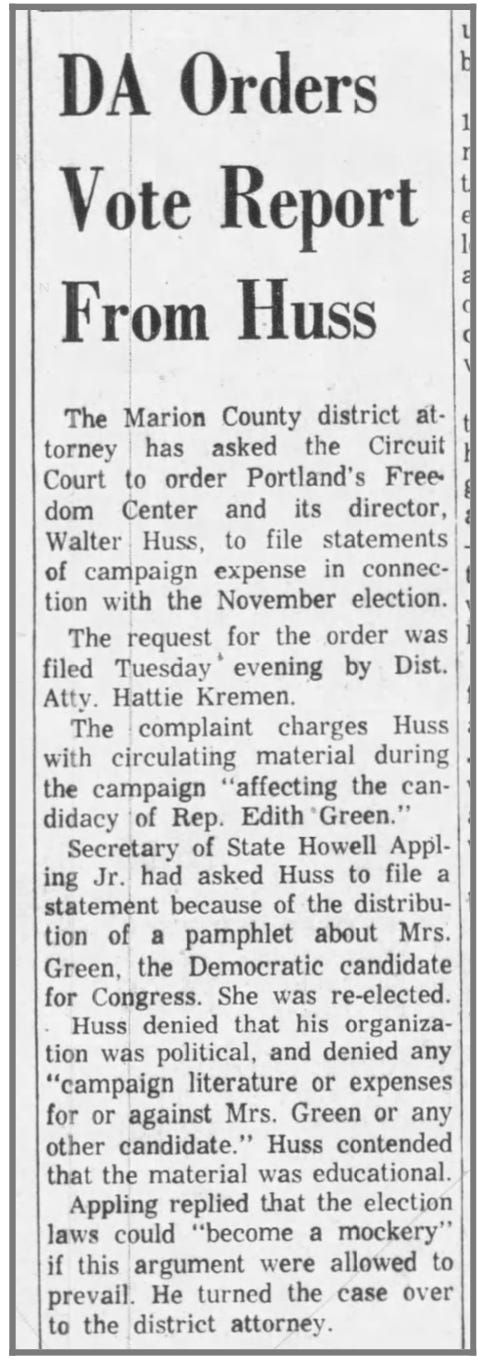
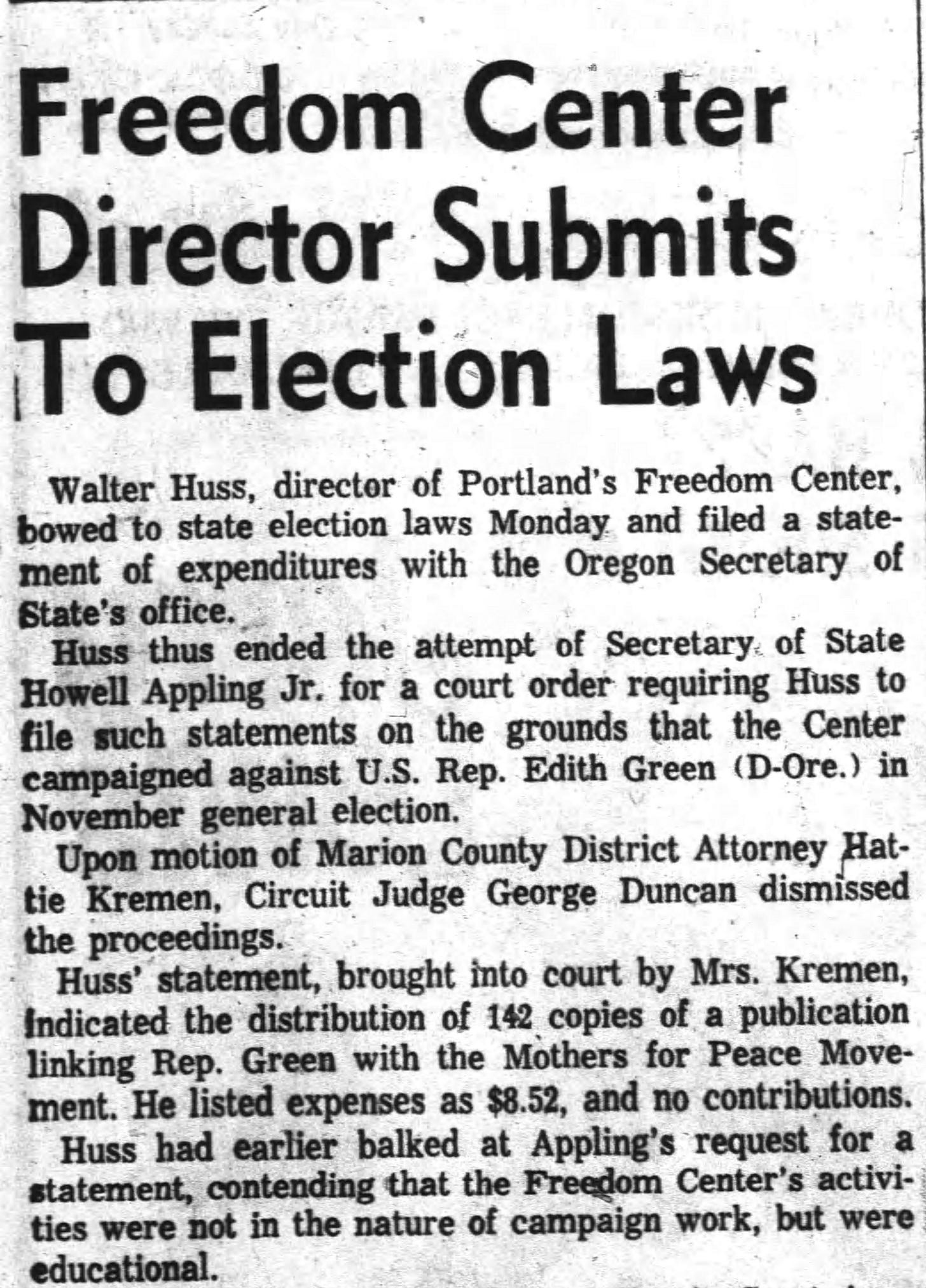
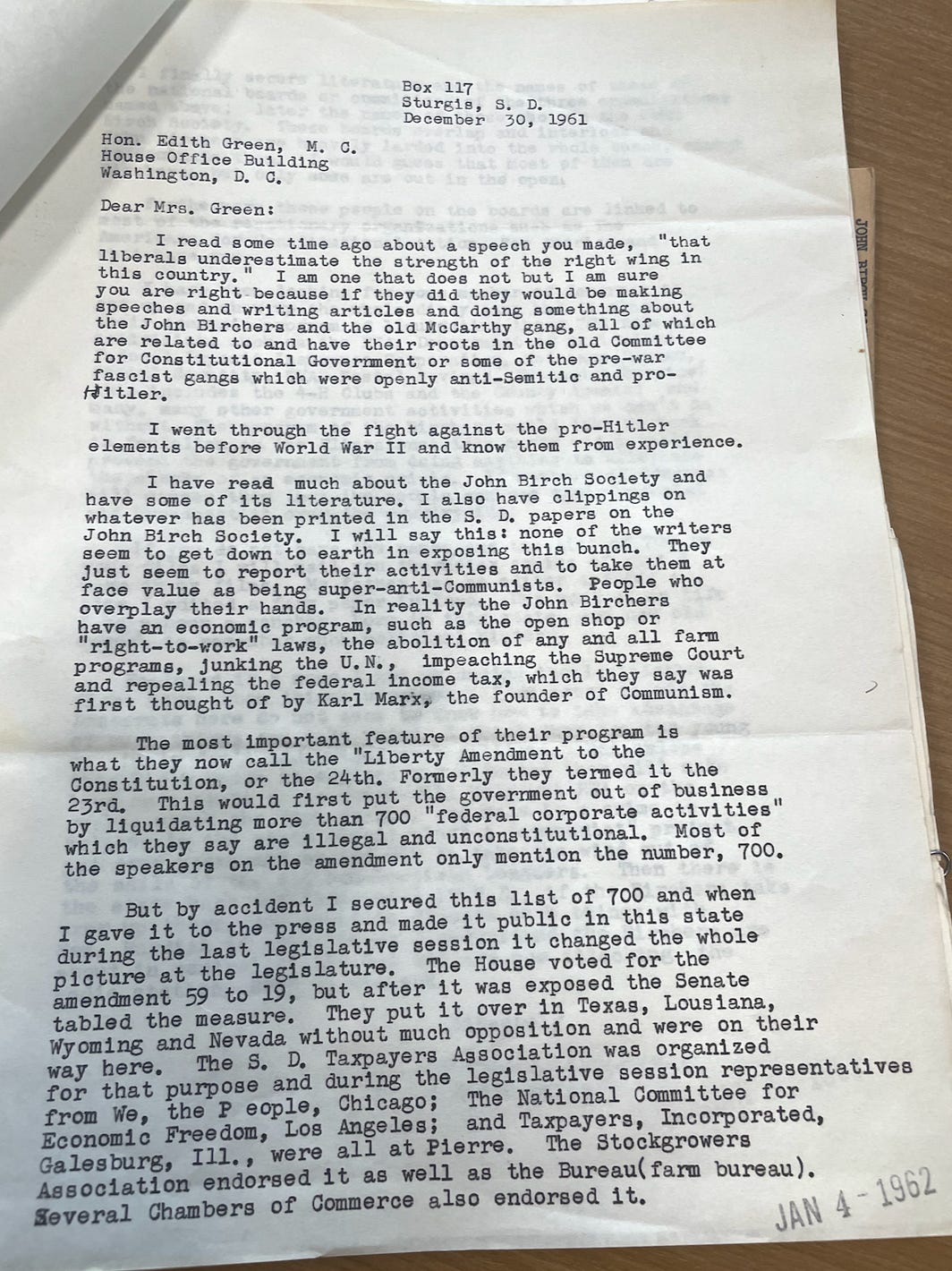

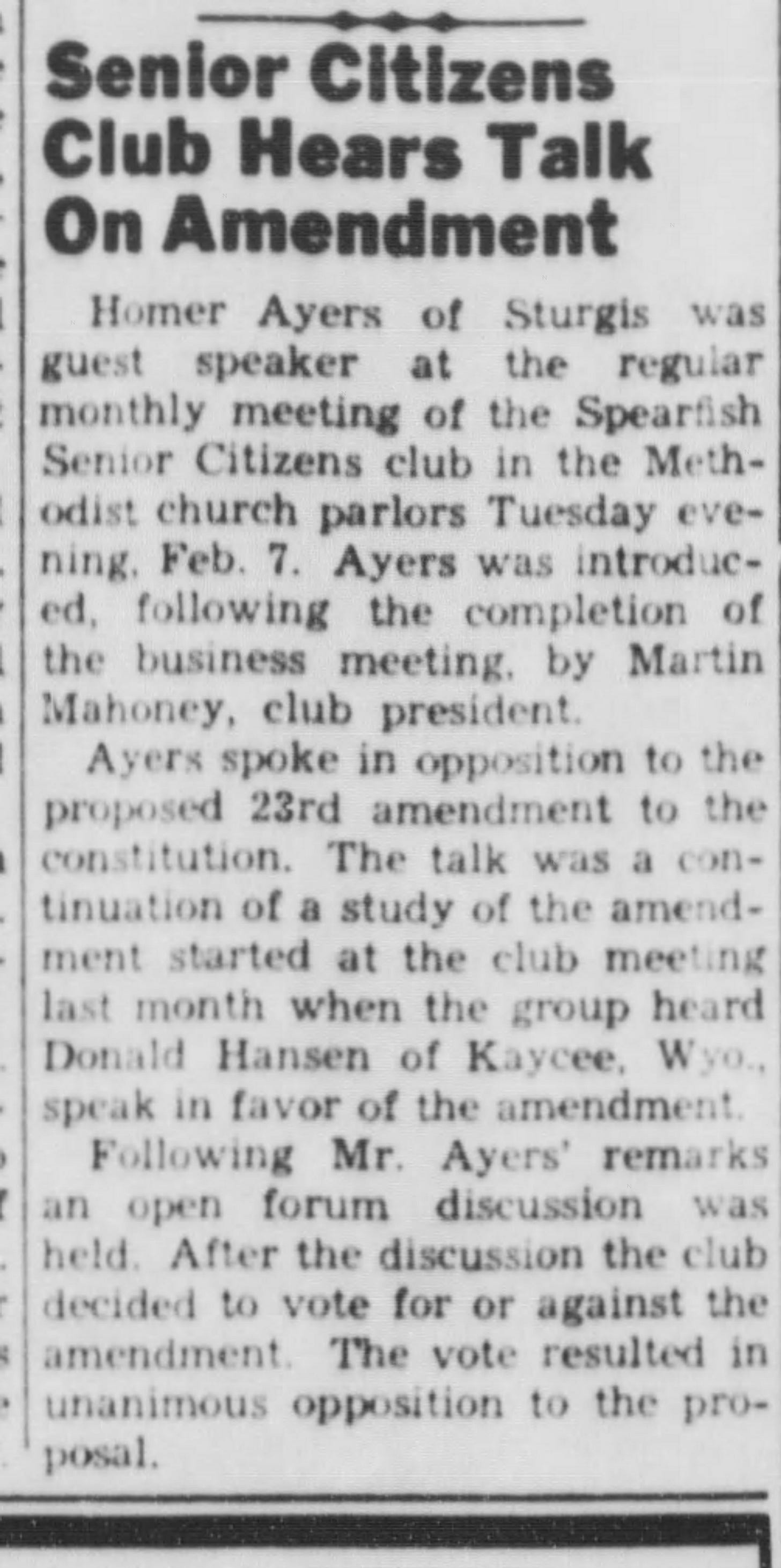
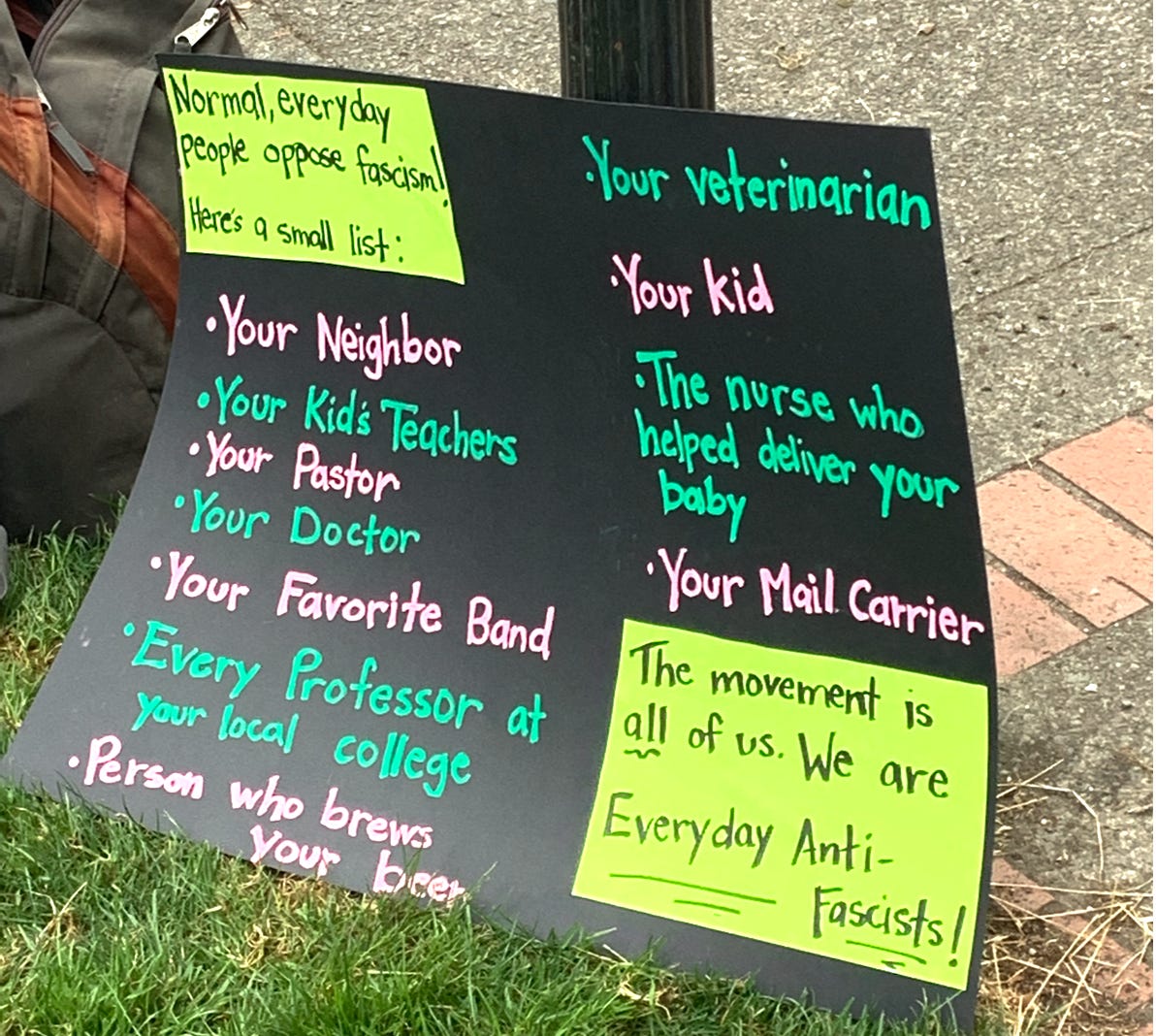


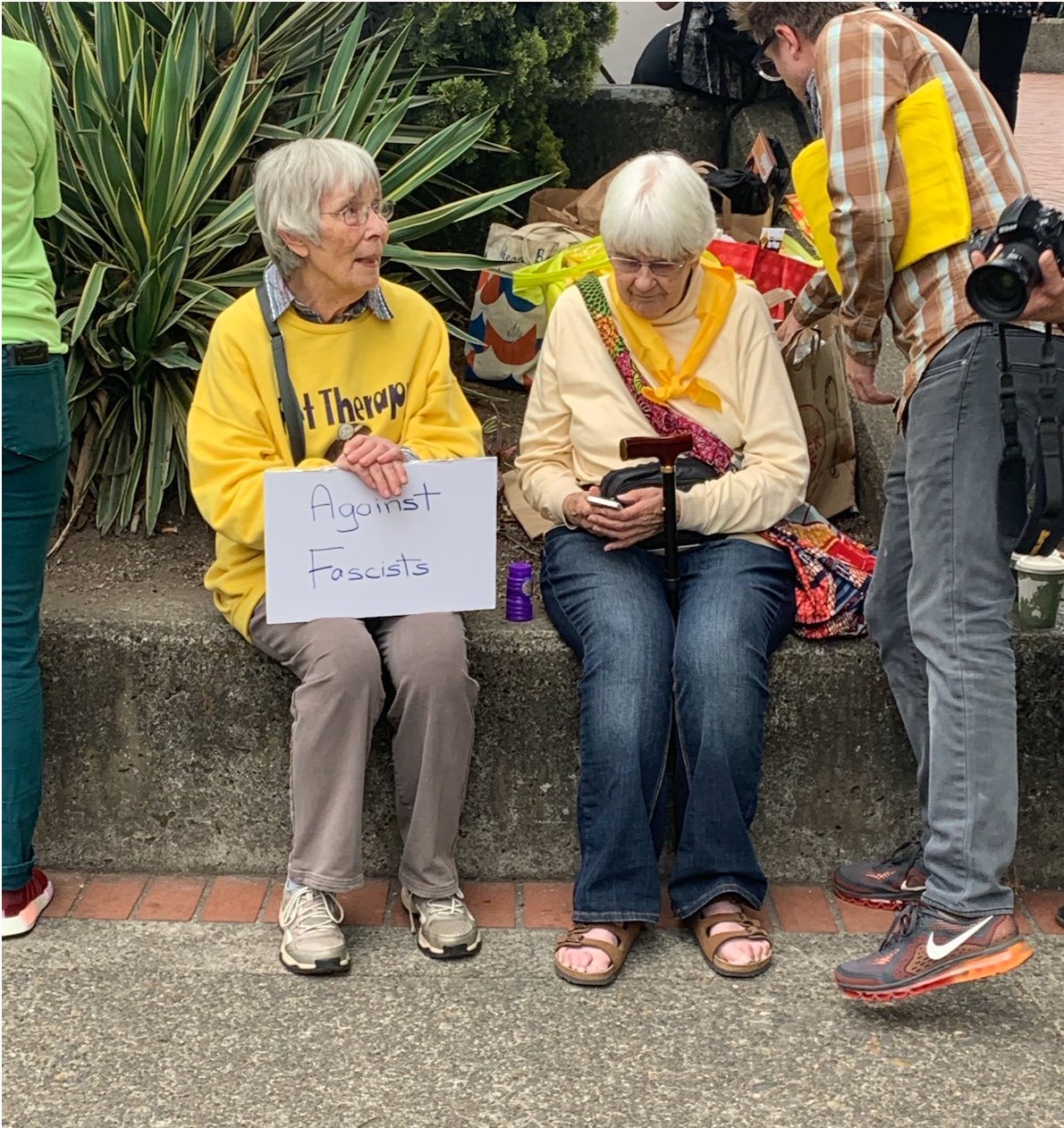

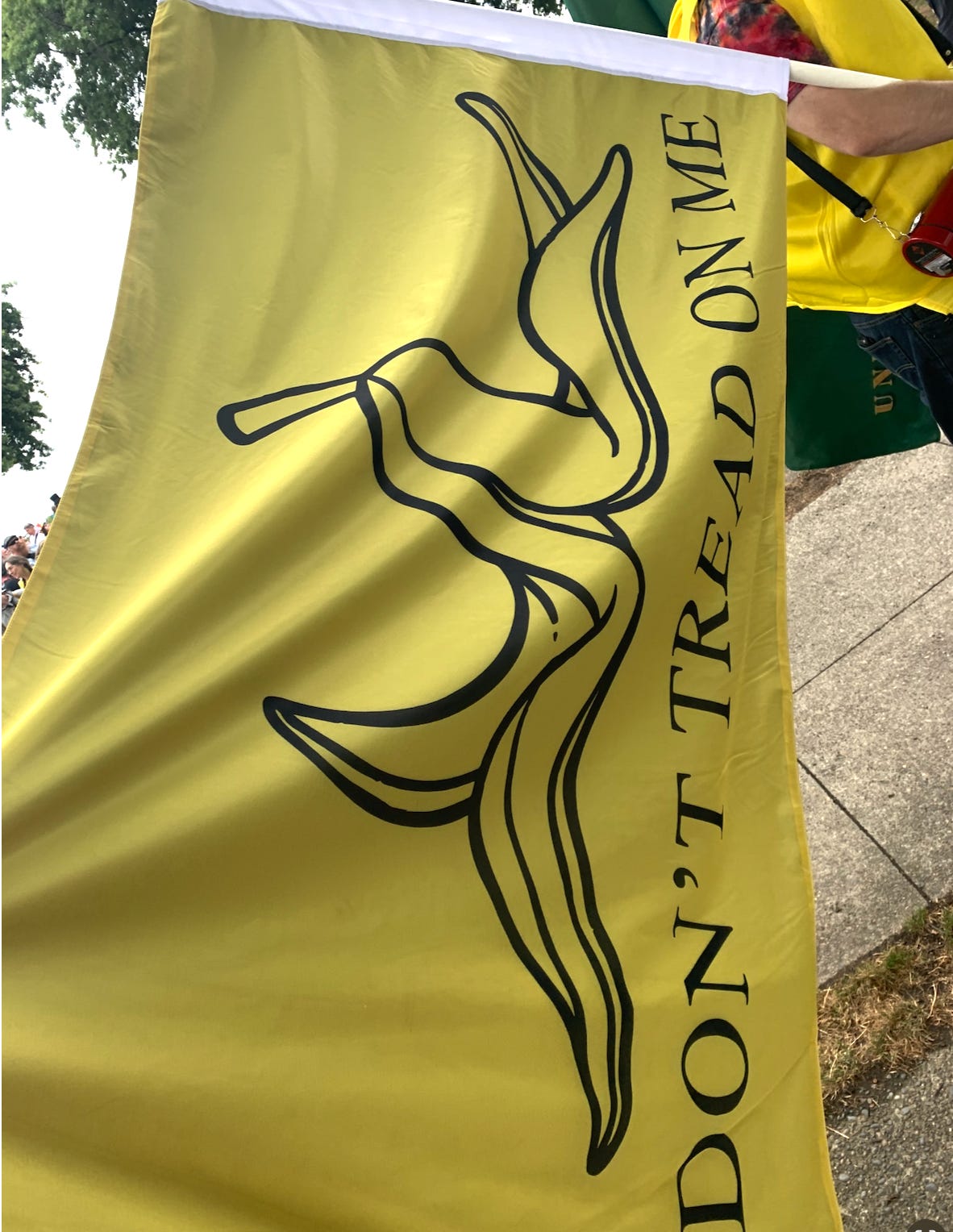


This photo of the two women at the 2019 protest is wonderful! Thank you for sharing.
Thank you for your continuing historical research and revelations. As you explain, understanding fascism in America, its appearance, rise, and the fight against it gives us a common ground on which to stand and from which to fight back.